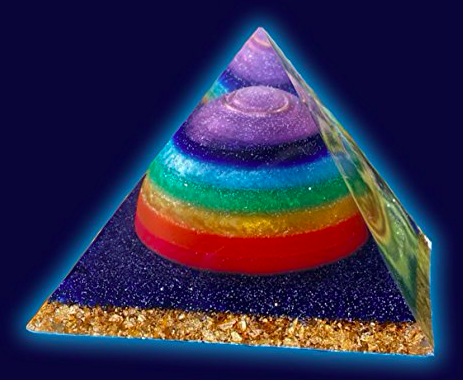It's coming.
Post-porn

Erotic desensitization is nearly complete.
A curious trend has emerged online over the past few years of highly eroticized videos of women doing mundane things without any explicit sexual content.
The videos go something like this:
A woman will be somewhere, usually a kitchen, showing off a cooking, cleaning, or craft “hack.” The hack will have some air of the sensual, maybe it’s a cake dripping with caramel sauce, or a delicately braided scarf, repurposed into clubwear. Without fail, something taboo will occur—a hairbrush placed just a little too close to a plate of food for comfort, a roach scuttles across the kitchen counter.
The video ends without incident and certainly without anything that explicitly gestures towards sex. And yet, the viewer is left feeling that something is amiss. These videos always go viral, and the comments that swirl around them suggest they evoke either confusion or disgust. But as “disgusted” as people are, they keep cropping up, and they keep enjoying popularity.
The most disturbing part of these videos for viewers isn’t how confusing they are or how little sense the recipes seem to make or even how disgusting they tend to be, but rather that something about them feels pornographic, and inarticulably so.
Some have suggested that they’re purposely surreal—think David Lynch with a lower budget and perhaps less vision. Could this simply be video art that’s slid under the radar? But I would argue that these videos are surrealistic in the same respect the work of Crispin Glover or even Tommy Wiseau is. That is, by coincidence: from a mind that simply doesn’t grok that their vision of the world is detached.
Elsewhere, people have attempted to find a fetish they slot into, many suggesting “sploshing.” Sploshing is when, as Insider explains, “a person experiences sexual arousal from incorporating wet and messy food in sex, whether it’s smearing food on their skin or watching someone else do it.”
But that doesn’t seem right either. It’s not simply a categorization issue at play here—a fetish we’re unfamiliar with being mislabeled by unknowing eyes.
Because the M.O. of these videos isn’t smearing or spreading and sploshing certainly doesn’t explain some of the other pieces of content that are ostensibly of this type, a genre that is, to recall the famous Jacobellis v. Ohio quote, a largely “you know it when you see it” one. There’s no food in the versions of these videos that include crafts, for example.
It is a difficult task to say what makes these videos feel pornographic, though.
What could it be? They’re often staged in sunny environs, so maybe it’s the combination of bad acting and bright Californian or Floridian backdrops that are normally associated with porn. It could just be they prominently feature women who aren’t otherwise “influencers,” but also don’t feel totally anonymous, either, since the same cast of characters will appear again and again. It could be the undercurrent of taboo, the way they re-frame naughtiness, something that is totally lost in both porn and sex, more generally. Or maybe it’s just that there’s something about them that feels sensual, and the rest of our media diet is so embedded in sexuality we can’t help but associated the two: oozing caramel, carefully applied frosting, dripping icing.
Or maybe it’s just the shock of seeing all of these in a new setting, one we wouldn’t necessarily assume is sexual, that paradoxically pushes it further into the realm of the pornographic.
So-called “sploshing” videos—though, really, I think the ones created by TikTok users like @bananalovesyoutoo or available for deconstruction by @valeriteresa might be some secondary, unnamed genre—aren’t the only videos that exist in this strange space of “non-pornographic porn,” either.
There are at least four other formats that both enjoy mainstream popularity and seem have the same effect on audiences. There are ASMR, or “autonomous sensory meridian response,” videos, where usually, but not always, a beautiful young woman will try to get the viewer to feel “tingly” by carefully annunciating a word in a whisper or slowly eating a crunchy food or typing; mukbang, which can best be described as a sort of hobbyist expression of binge-eating; popping videos, which primarily depict pus oozing out of pimples; and finally, “oddly satisfying” videos, which show everything from puzzle pieces that fit perfectly together to toothpaste slowly being pressed out of a tube.
One theory I’ve kicked around is that we’re so oversaturated with traditionally erotic stimuli that for some people, we’ve effectively de-sexualized the sexual, and are now sublimating our libidos into anything but sex itself.
I am far from the first person to point out that sex is everywhere. Clinical guides to how to engage in once scandalizing sex acts (and even how to seek “after care,” a sort of simulated intimacy, or how to avoid “catching feelings” afterwards!) are frequently printed in publications whose target audience is teen girls. Sex work is a cause célèbre, and in some circles, it’s social suicide to question the validity of the unusually vague and ubiquitous slogan “sex work is work.”
Pornography may be easy to access and consume, but it’s even easier to produce and share. It’s barely gossip if you stumble across pornography of a neighbor or classmate—just make sure you pay the subscription fee for their OnlyFans first. Sexting is as essential to the “courtship process” (insofar as one still exists, and for the few of us still dating) as a first kiss. “Porno” and “BDSM chic” have both trended in fashion, with their influence stretching into cosmetic surgery.
Very little is left to the imagination today, and imagery that was once considered the provenance of niche fetishes is now widely available, online and off. So it’s unsurprising that there would be a reaction to this: burnout, ranging from the dramatic and final to the creeping and subtle.
Young people are not abandoning sex, throwing up their arms and adopting pro-purity ideologies. But radical changes are altering what sex itself is. Intercourse has ceased to be sexual, and signifiers once tied to sex are now just individual pieces in the “Lego set” of one’s identity, to echo the writer Mary Harrington, divorced from the context of a relationship, a scene, or even desire itself.
However, it would also be a mistake to frame our current sexual culture as “too permissive.” Permissive is the wrong way to think about it. The message isn’t one of unfettered, unchecked carnal desire; it’s one of endless, aimless consumption and dopamine hits. Women talk about first dates and even hook-ups like they’re chores yet by their own admission can’t stop swiping on dating apps. Sex acts are described in graphic terms—that include everything but emotion. In other words, they’re just another consumer product you can pick off the shelf.
In The Agony of Eros, Byung-Chul Han quotes Giorgio Agamben’s warning against “this brazen-faced indifference that fashion models, porn stars, and others whose profession it is to show themselves must learn to acquire; they show nothing but the showing itself (that is, one’s own absolute mediality). In this way, the face is loaded until it bursts with exhibition-value. Yet, precisely through this nullification of expressivity, eroticism penetrates where it could have no place: the human face. […] Shown as a pure means beyond any concrete expressivity, it becomes available for a new use, a new form of erotic communication.”
Could it be we’ve moved beyond even that point? A point where eroticism has been drained from sex, but also drained from porn, and forced to find a new home, a swarm seeking ever new pornographies, new sexualities, new expressions of sex itself?
The American Mind presents a range of perspectives. Views are writers’ own and do not necessarily represent those of The Claremont Institute.
The American Mind is a publication of the Claremont Institute, a non-profit 501(c)(3) organization, dedicated to restoring the principles of the American Founding to their rightful, preeminent authority in our national life. Interested in supporting our work? Gifts to the Claremont Institute are tax-deductible.
The Sexual Revolution was never about freedom. It was always about control.
A second-wave feminist fails to discern failure



